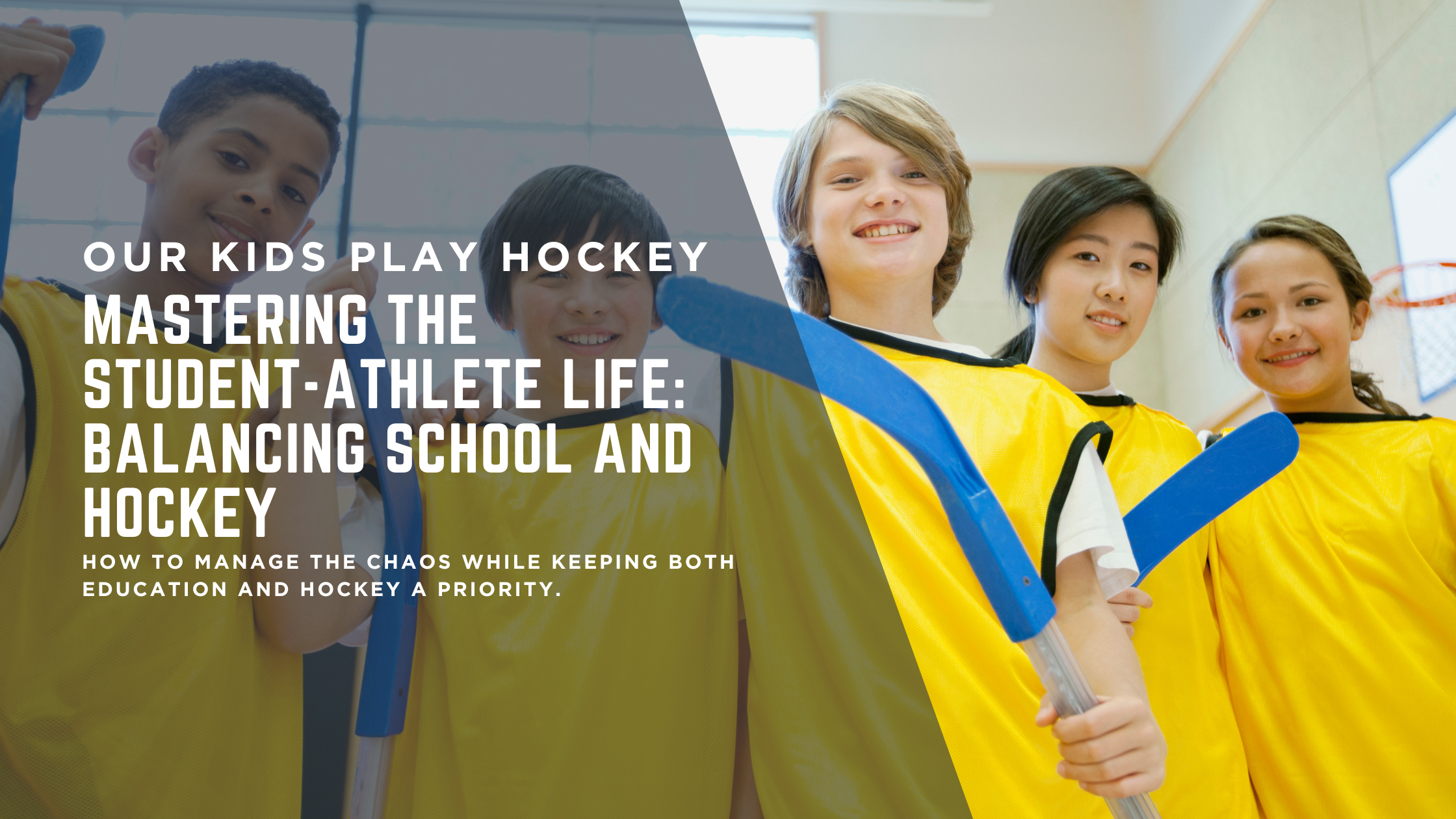Mastering the Student-Athlete Life: Balancing School and Hockey

Balancing school and hockey is one of the greatest challenges young athletes and their families face. Between practices, tournaments, homework, and tests, it can feel like there are never enough hours in the day. In a recent episode of Our Kids Play Hockey, Lee Elias and Mike Bonelli tackled this very topic, offering insights for parents and players on how to manage the chaos while keeping both education and hockey a priority.
Education Comes First—Always
No matter how talented your child is on the ice, academics must come first. Injuries, unforeseen circumstances, or the reality of life beyond the rink mean education is the foundation every athlete needs. As Lee put it: “Hockey is your reward for doing well in school.”
Parents should set clear expectations: if grades slip, hockey takes a backseat. This teaches accountability and emphasizes that success in both areas is connected.
Communication with Teachers is Key
One of the most effective tools for families is proactive communication with teachers:
-
Share your child’s schedule early in the year.
-
Frame hockey absences respectfully—as opportunities for growth and learning, not just “time off.”
-
Ask about taking tests early rather than late.
-
Encourage your child, especially as they get older, to advocate for themselves directly with teachers.
When teachers see that education is being prioritized, they are far more willing to work with student-athletes.
The Power of Routine and Planning
Routine is the backbone of balancing hockey and school:
-
Use a calendar (digital or written) that the whole family can access.
-
Plan travel time realistically—include rush hour, unexpected delays, and prep time before practices or games.
-
Establish daily habits: homework right after school, gear unpacked immediately after games, and consistent bedtimes.
As Lee shared, “Routine, routine, routine… it makes your life easier.” Even professional athletes rely on rigid routines to stay sharp.
Avoiding Burnout: Breaks and Choices
Hockey plus school can easily overwhelm kids. To reduce stress:
-
Build in downtime—sometimes the best “training” is simply rest.
-
Give your child choices. Allow them to decide between an extra practice or catching up on schoolwork. Empowering them builds responsibility and self-awareness.
-
Recognize when too many activities are causing fatigue. Sometimes less really is more.
Life Skills Beyond the Rink
Balancing hockey and school isn’t just about keeping grades up and ice time consistent. It’s about teaching:
-
Time management
-
Accountability through choices
-
Respect for commitments
-
Resilience in the face of setbacks
These lessons will serve kids long after their playing days are over.
Final Whistle
Hockey and school don’t have to compete with each other. With planning, respect, and clear priorities, they can complement one another and prepare young athletes for success in life. As Mike reminded us: “If you’re a AAA hockey player, you need to be a AAA student.”
Parents, remember—you’re not just raising hockey players. You’re raising future adults. Keep education first, hockey fun, and family life balanced.


